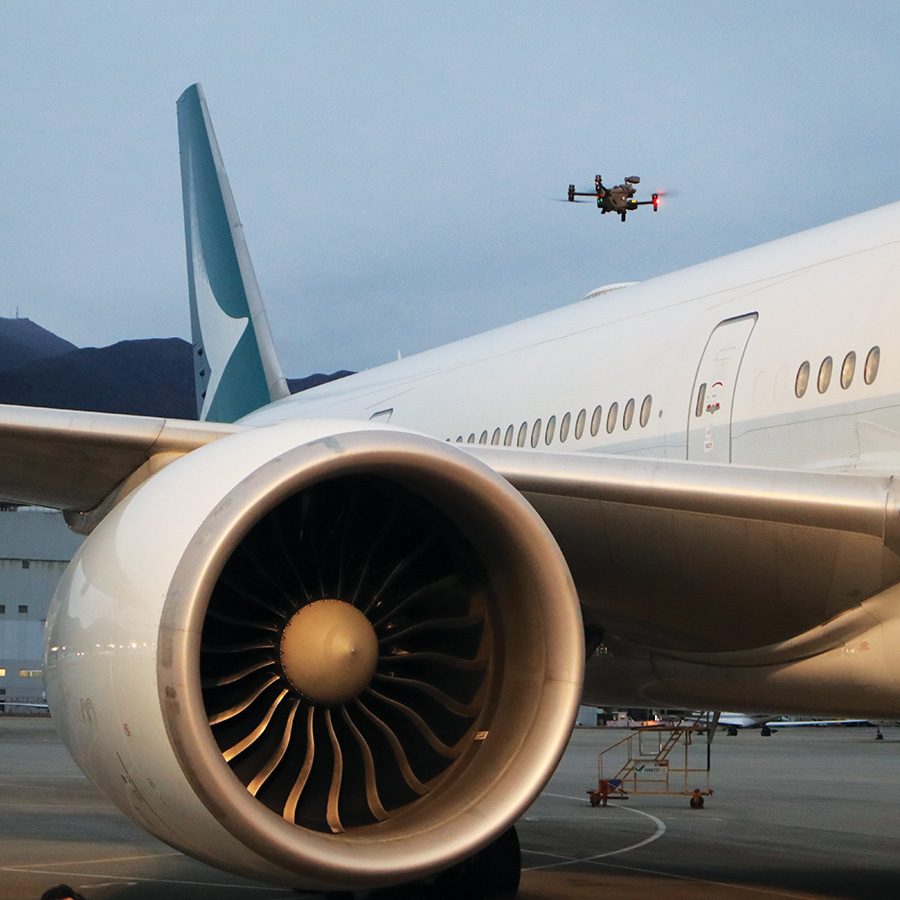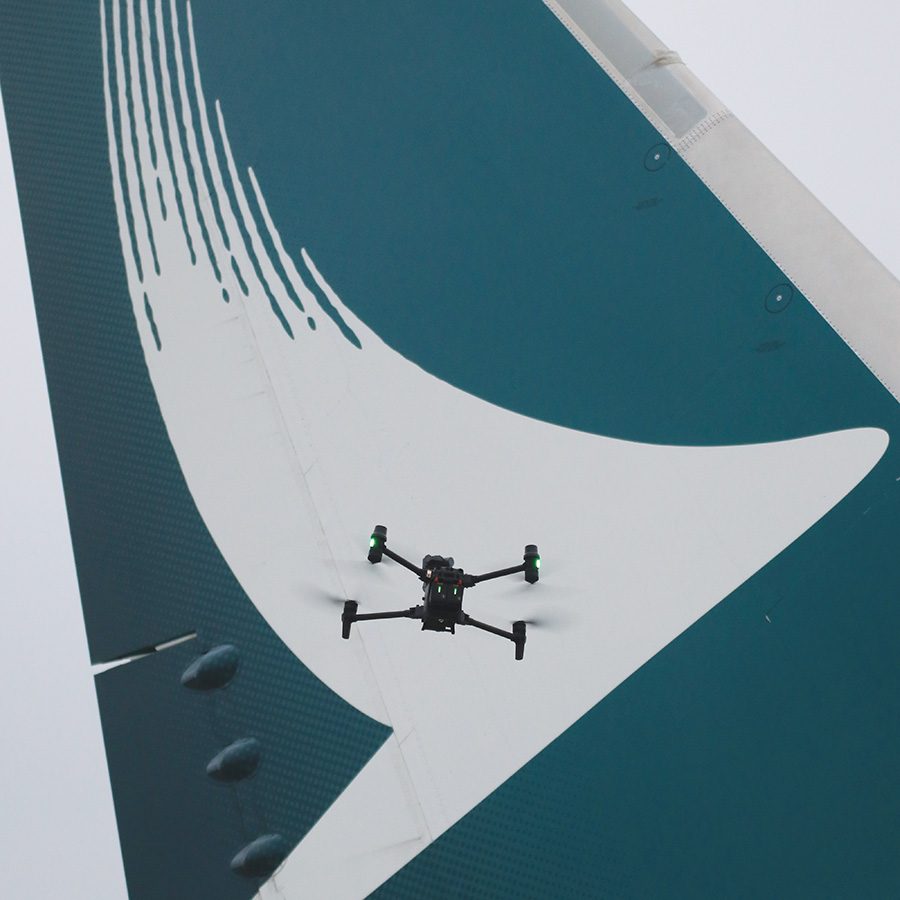How we fly: eyes in the skies

Drones and airports do not typically mix. In 2018, during the Christmas travel peak, London’s Gatwick Airport was shut for three days while the police investigated drone sightings near the runway.
As any recreational drone owner knows, drones cannot be flown in restricted areas by both law and design; GPS systems will block a drone from entering a defined boundary around a no-go zone, like an airport. But lately, there have been drones operating safely in the skies above Hong Kong International Airport (HKIA) – thanks to Cathay Pacific Engineering.


Among the ranks of the Engineering team is a new, elite cadre of newly licensed pilots: drone pilots. Four strong, made of the right stuff, they are the first to have been permitted to fly untethered drones safely on the airfield at HKIA. But why?
Drones are already used for a variety of commercial applications, from inspecting inventory in warehouses to delivering parcels to remote areas or checking power lines. They provide a cost-efficient and intelligent eye in the sky. That’s an eye that can be very useful at airports, as one of the new pilots explains.
“We’ve been looking at innovative ways technology can be used to assist with various types of aircraft, particularly in the line maintenance environment, where inspections need to be performed at the extremities of the aircraft,” says Jimmy Cheng, Technical Services Manager – Structures. “The use of drones in line maintenance has the potential to be a game-changer with many benefits.” Those benefits include improving the effectiveness of inspections, enhancing personal safety by avoiding the need to work at height, reducing airport congestion and emissions by limiting the need to tow aircraft to a maintenance bay, and improving aircraft availability by reducing the time required to perform an inspection.
“We have a vision that, in the not-too-distant future, an aircraft reporting a suspected lightning strike arrives, and an autonomous drone takes off to perform a pre-determined inspection using high-resolution cameras and measurement software,” says Cheng. “The gathered information is relayed to an engineer on the ground to determine if further maintenance is required.”
With the support of the Hong Kong Civil Aviation Department (CAD) and the Hong Kong Airport Authority (AAHK), Cathay Pacific has, to date, performed a number of controlled drone flights in the airport area to demonstrate the technology. “We believe we are the first airline in Asia to perform outdoor drone operations at an airport,” says Cheng.
There are still challenges to overcome before controlled flights of drones can be approved for use on a routine basis in the airport area. Organising a flight currently involves coordinating with many stakeholders, including the AAHK, CAD and Air Traffic Control, so that a time slot can be allocated. To date, the trial flights have been conducted in the early hours when the airport is quieter. But Engineering is determined to take it one step at a time to demonstrate and prove the technology to achieve their vision.
With autonomous ground vehicles towing baggage and cargo becoming a more common sight at airports around the world, we should expect controlled flights of drones in the coming years. Watch this space – and the skies.
More inspiration
- China – the Chinese Mainland, Hong Kong SAR, Macao SAR and Taiwan Region
- Hong Kong SAR - English
- Chinese Mainland (China) - English
- Taiwan, China - English
- 香港特別行政區 - 繁體中文
- 中国內地 - 简体中文
- 中國台灣 - 繁體中文
- Africa
- South Africa - English
- Asia
- Bangladesh - English
- Korea - English
- Singapore - English
- Cambodia - English
- 한국 - 한국어
- Sri Lanka - English
- India - English
- Malaysia - English
- Thailand - English
- Indonesia - English
- Maldives - English
- ประเทศไทย - ภาษาไทย
- Indonesia - Bahasa Indonesia
- Myanmar - English
- Vietnam - English
- Japan - English
- Nepal - English
- Việt Nam - tiếng Việt
- 日本 - 日本語
- Philippines - English
- Australasia
- Australia - English
- New Zealand - English